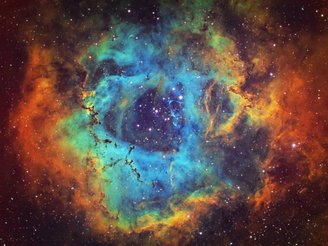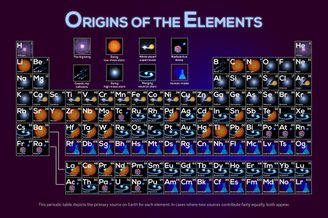One of the great structures of modern science is the periodic table. An organized map of the building blocks that make up everything that exists in the universefrom distant stars to our fingertips.
Each chemical element, with its unique properties, occupies a special place in an almost magical arrangement, revealing patterns that guide our understanding of the composition of all things.
But what few people know The periodic table is actually a cosmic history: Each element appearing within it has an origin, a history shaped by violent cosmic events from the Big Bang to distant supernova explosions. Let’s take a look at this story!
The first version of the periodic table was proposed by Russian chemist Dmitri Mendeleev in 1869 and arranged the known elements according to their chemical properties and atomic mass. A repeating pattern emerged in the properties of the elements, making it possible to predict the existence of yet undiscovered elements.
Over time, as more elements were found, the table was improved and the concept of atomic number (the number of protons in the nucleus of an atom) was introduced, giving the table the form we know today.
But to understand the origin of chemical elements, we need to look beyond Earth and consider how these elements were formed in cosmic events, dating back to the birth of the Universe.
Shortly after the Big Bang, about 13.8 billion years ago, extreme conditions of temperature and density allowed the first elements to form. Only the lightest elements could form in this primitive “soup” of subatomic particles.
Hydrogen and helium nuclei, The simplest and most abundant elements in the universe appeared in the first minutes after the Big BangWith traces of lithium and beryllium nuclei.

However, these primordial elements are insufficient to explain the chemical diversity we observe. To create heavier elements, the Universe had to build powerful furnaces: stars.
Nuclear fusion, the process in which light atomic nuclei combine in stellar cores to form heavier nuclei, results in the emergence of elements such as carbon, nitrogen, oxygen and other components necessary for life.
Stars of different masses play different roles in the production of elements. smaller stars, Like the Sun, they can convert hydrogen into helium and, in the final stages of their lives, helium into carbon and oxygen.. These stars end their lives with less dramatic explosions, forming planetary nebulae and releasing the elements they create within them.

Massive stars with a mass at least eight times that of the Sun are capable of forming heavier elements such as iron. They produce progressively heavier elements through a series of successive fusions in their inner layers until iron becomes the limit. Fusion of elements heavier than iron does not release more energy; On the contrary, it consumes energy and causes the star to collapse.
When a massive star dies, it explodes as a supernova, one of the most energetic events in the Universe. During this explosion, the temperature and pressure are so high that it allows the formation of elements heavier than iron, such as gold, silver and uranium. These elements then disperse into interstellar space, enriching the gas and dust clouds that will form the next generation of stars and planets.

Based on this information, common periodic table could be updated to a cosmic table: family tree of chemical synthesis in the universe. It is the periodic table updated with information that tells us where the atoms that make up everything we know come from. This concept has been developed and popularized by many scientists over decades and shows that chemistry and physics are intertwined in astrophysics.
For example, when we look at the locations reserved for hydrogen (H) and helium (He), we see that their origins date back to the Big Bang, and when we look at their locations relative to gold (Au), we see that xenon (Xe) was created during neutron star mergers.
After all, The cosmic periodic table is not just a scientific toolbut also a poetic reminder that we are part of the Universe that we eagerly seek to understand.
Source: Tec Mundo
I’m Blaine Morgan, an experienced journalist and writer with over 8 years of experience in the tech industry. My expertise lies in writing about technology news and trends, covering everything from cutting-edge gadgets to emerging software developments. I’ve written for several leading publications including Gadget Onus where I am an author.













